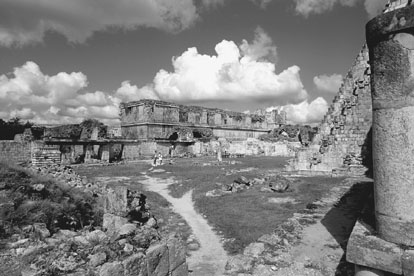

 | Page 892 |  |
dating after the Spanish conquest, is a relatively new field in Mexico, but since the 1960s, there have been several large projects and many smaller ones that have excavated structures and settlements from the sixteenth to the nineteenth centuries (Charlton 1972; Juárez Cossío 1984; Lee and Markman 1977; Vega Sosa 1979). These programs usually benefit from parallel investigations of historical archives in Mexico and Spain.

Mayan ruins at Uxmal
(Danny Lehman/CORBIS)
Maya epigraphy has provided one of the greatest breakthroughs in Mesoamerican archaeology in recent years. Based on the previous studies of Knorosov, Proskouriakoff, Thompson, Berlin, Kelley, and others, the decipherment of texts has advanced to the point that there are now partial translations of many inscriptions. Recent work by Floyd Lounsbury, linda schele, Peter Mathews, Stuart, and others have identified royal dynasties and many historical events for some of the principal classic Maya centers, and these scholars also have verified the phonetic structure of much of Maya writing (Coe 1993). There is literally a flood of publications containing translations of inscriptions and new historical summaries largely based on epigraphic studies (Schele 1982; Schele and Freidel 1990).
Large government projects dedicated mainly to the excavation of main plazas or “monumental zones” of ancient centers are still common, but they vary greatly with regard to theoretical frameworks, field techniques, and objectives. Some of the most significant of these programs include the Teotihuacán project directed by Bernal during the 1960s, which principally concentrated on the exploration and reconstruction of buildings on the Street of the Dead. The more recent Teotihuacán projects directed by Rubén Cabrera have extensively excavated the area of the Ciudadela, especially the Temple of Quetzalcoatl (Cabrera, Rodriguez, and Morelos 1982; Cabrera et al. 1989), and have produced important data on the functioning of the Teotihuacán state.
The Cholula project directed by Marquina at the end of the 1960s excavated and reconstructed architectural complexes near the Great Pyramid and produced some excessively restored buildings. This program also included
 |  |